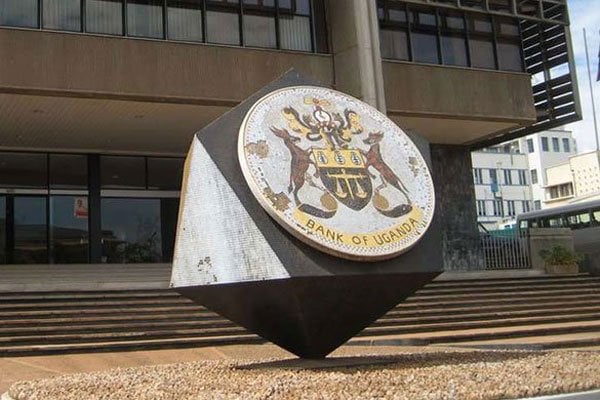Prime
Are domestic debts running Uganda dry?

A truck delivers food crops for sale at Nakasero Market in Kampala on December 20, last year. Moody’s put Uganda’s debt burden at 48.6 percent after her stock of public debt soared to Shs78.8t in June of 2022. PHOTO/GABRIEL BUULE
What you need to know:
- When is debt sustainable? How much is too much? Assessing debt sustainability can be such a minefield.
- In this explainer, Robert Madoi explores the contours of Uganda’s domestic borrowing.
What does Uganda’s public debt stock look like?
The external components of Uganda’s public debt stock bulged from 37 percent or $7.2 billion in June of 2021 to 39 percent or $8.2 billion at the back end of last June. Set against the reduction of external debt from 63 percent or $12.3 billion to 61 percent or $12.8 billion, the optics of the bulge in domestic borrowing are infernal.
In a budget support brief to Parliament for financial year (FY) 2022-2023, the Finance ministry attributed the all-pervading status of “increased borrowing from the domestic market” to “the dwindling windows of external financing.”
Does this mean that the government prefers to borrow externally?
It is evident that external sources dangle better concessional terms such as a low interest rate and deferred repayments to mention but two. In fact, in a debt sustainability analysis report for FY 2020-2021, the Finance ministry conceded that domestic borrowing “is typically costlier.”
The government nevertheless uses treasury bills (a short-dated instrument with a maturity period of not more than 12 months) and treasury bonds (a long-term instrument with a maturity period of more than one year) to borrow from the domestic market.
In December of 2021, when Uganda’s domestic debt stood at Shs27.7 trillion, treasury bonds accounted for 81 percent of the stock. Treasury bills, therefore, gobbled up 19 percent of the said stock.
So what is the maturity structure of Uganda’s domestic debt portfolio?
Uganda’s domestic debt stock as of December 31, 2021, indicated that the country had three treasury bills totalling Shs5.25 trillion. There were also 15 treasury bonds, accounting for a sizeable Shs22.52 trillion. The vast bulk of the bonds at the time were those that straddle 10 years, accounting for 17 percent of the stock. This translated to Shs4.77 trillion.
To whom does the government owe money to domestically?
By June of 2021, commercial banks (37.8 percent) and pension and provident funds, i.e. the National Social Security Fund or NSSF (33.7 percent) split north of 70 percent of the country’s public domestic debt.
While the government has gravitated toward a methodical, even cautious, approach that compels it to maintain net domestic borrowing at one percent of gross domestic product (the monetary value of final goods and services), domestic debt interest payment ballooned to Shs3.5 trillion at the back end of December of 2021.
ALSO READ: Inside Africa’s debt crisis
The Finance ministry attributed the increment in interest repayment to “increases in both outstanding stock and interest rates.” It has barely helped matters that the year-on-year rise in the stock of domestic debt over a four-year stretch reads thus: Shs12.1 trillion in December of 2017; Shs14.3 trillion in December of 2018; Shs17.3 trillion in December of 2019; Shs22.9 trillion in December of 2020; and Shs27.7 trillion in December of 2021.
Data points from a dataset released by the Finance ministry indicate that the domestic debt stock stood at Shs5.4 trillion during FY 2012-2013; Shs7.2 trillion in FY 2013/2014; Shs9.3 trillion in FY 2014/2015; Shs10.8 trillion in FY 2015-2016; Shs11.5 trillion in FY 2016-2017; Shs13.3 trillion in FY 2017-2018; Shs15.5 trillion in FY 2018-2019; Shs18.2 trillion in FY 2019-2020; and Shs25.4 trillion in FY 2020-2021.
Does this spell gloom and doom?
The government’s budget wonks say that while they pair treasury bonds with treasury bills, it counts for much that the former outnumber the latter by a great amount.
“The ratio of debt maturing in one year as a share of total debt improved to 12.5 percent in June 2021 from 13.1 percent in June 2020,” the debt sustainability analysis report for FY 2020-2021 states, adding thus of the reduced refinancing risks: “This was due to the reduction in the volume of domestic debt maturing in one year as a percentage of total debt, from 37.0 percent in June 2020 to 30.6 percent in June 2021 following increased issuance of longer-dated domestic debt instruments.”
So has Uganda kept her public debt on a sustainable path?
Not according to credit rating agency Moody’s which downgraded Uganda’s credit outlook (i.e. debt status) from stable to negative a couple of months back. Moody’s put Uganda’s debt burden at 48.6 percent after her stock of public debt soared to Shs78.8 trillion in June of 2022.
The credit rating agency made clear that Uganda’s debt is “shorter-term” and when borrowed domestically “more expensive” than what other heavily indebted poor countries grapple with.
Moody’s basically stopped short of saying that Uganda is on the precipice of going into default.
The implications of a default cannot be ignored or trivialised especially since—besides harming growth and investment—it can make the country lose market access as well as suffer higher borrowing costs.
Its influence on the interest rate of private sector credit can also be crippling. This is particularly menacing not least because when interest rates go up, the risk of market defaults also spikes.
Why should Ugandans be bothered?
They should be bothered because of the spillover effects that—it must be added—are great in number. For one, the rising debt will whittle down economic opportunities. Some of its attendant effects include higher rates of inflation and confidence in the Ugandan shilling taking a hit.
This all sprouts from the slow growth that rising debt tends to birth. The slow growth also means that consumers risk grappling with a squeeze from the petrol pump to the supermarket checkout.




